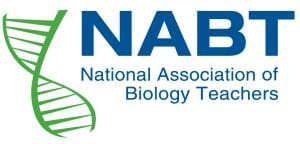 It feels like 2020 has had its fair share of bad news for educators. But we’re happy to share positive news: the National Association of Biology Teachers (NABT) includes human population dynamics as one of their recommended topics to be included in a comprehensive life sciences education. This can be seen in the association’s updated position statement on environmental and sustainability education. In their statement announcing the change, NABT stated, “NABT recognizes the influence and impact of humans on the natural world and supports development of environmental and sustainability education programs to thoughtfully address the world’s most pressing problems.”
It feels like 2020 has had its fair share of bad news for educators. But we’re happy to share positive news: the National Association of Biology Teachers (NABT) includes human population dynamics as one of their recommended topics to be included in a comprehensive life sciences education. This can be seen in the association’s updated position statement on environmental and sustainability education. In their statement announcing the change, NABT stated, “NABT recognizes the influence and impact of humans on the natural world and supports development of environmental and sustainability education programs to thoughtfully address the world’s most pressing problems.”
At Population Education, we couldn’t agree more. Human population growth and its associated changes and challenges are inextricably tied to the natural world. These connections may be immediately obvious: human encroachment into previously undeveloped land in areas where population is growing leads to the destruction of habitable land for any number of organisms, which threatens biodiversity and contributes to the human-led extinction of species. But these connections may also be more indirect: as population grows and people both alter their surrounding environments and increase contact with other areas, invasive species both gain a foothold in new environments and discover altered biological conditions allowing them to thrive.
The far-reaching impacts of human population growth are present throughout all of our inquiries into biological systems. NABT’s acknowledgement of human population dynamics as an integral topic for life sciences teachers will help ensure students are ready to tackle the enormous environmental challenges that we all face. We look forward to continuing our support for Biology teachers in incorporating human population topics in their classrooms and seeing the impact on students’ lives now and into the future.
Thank you NABT!


